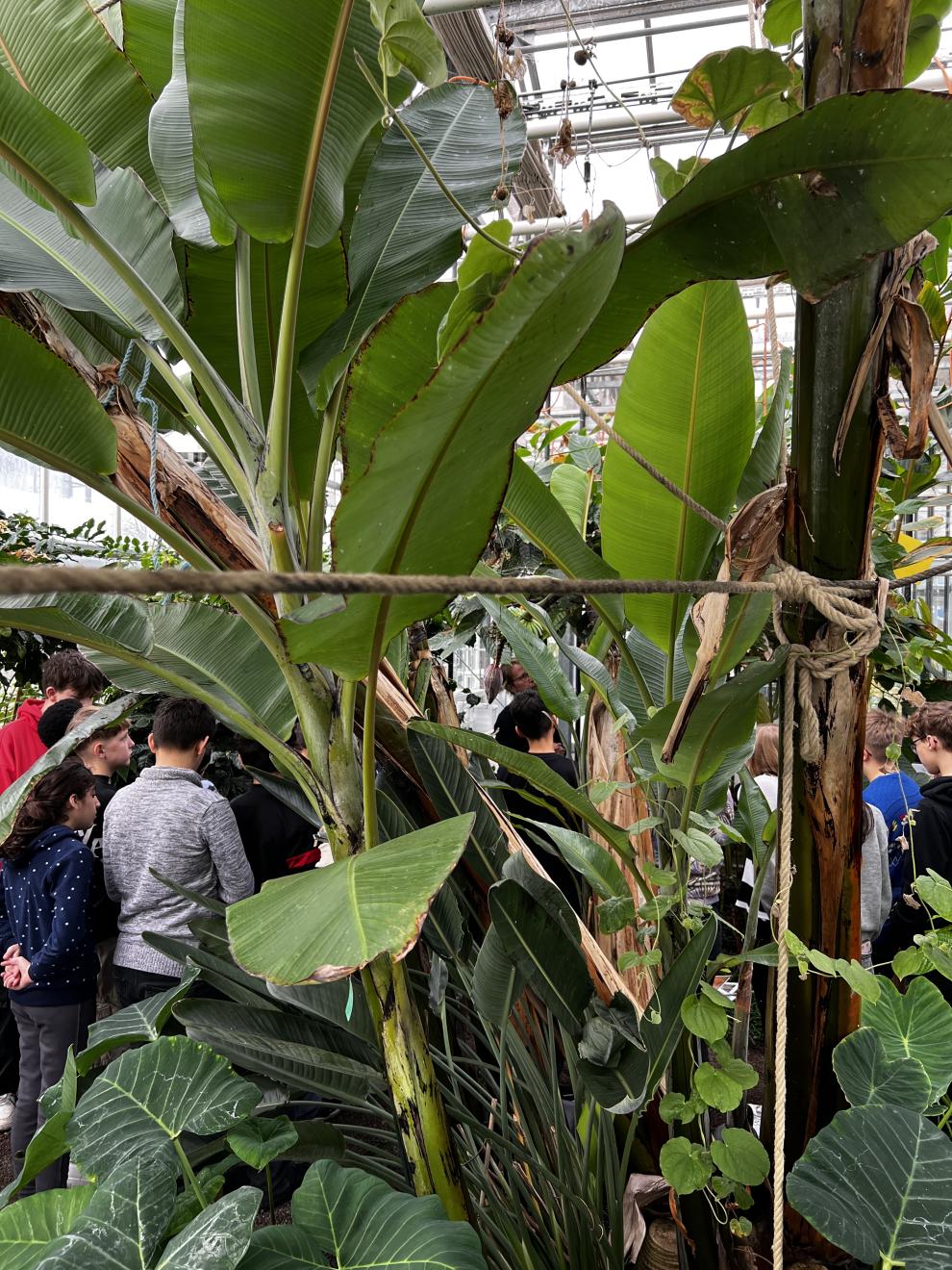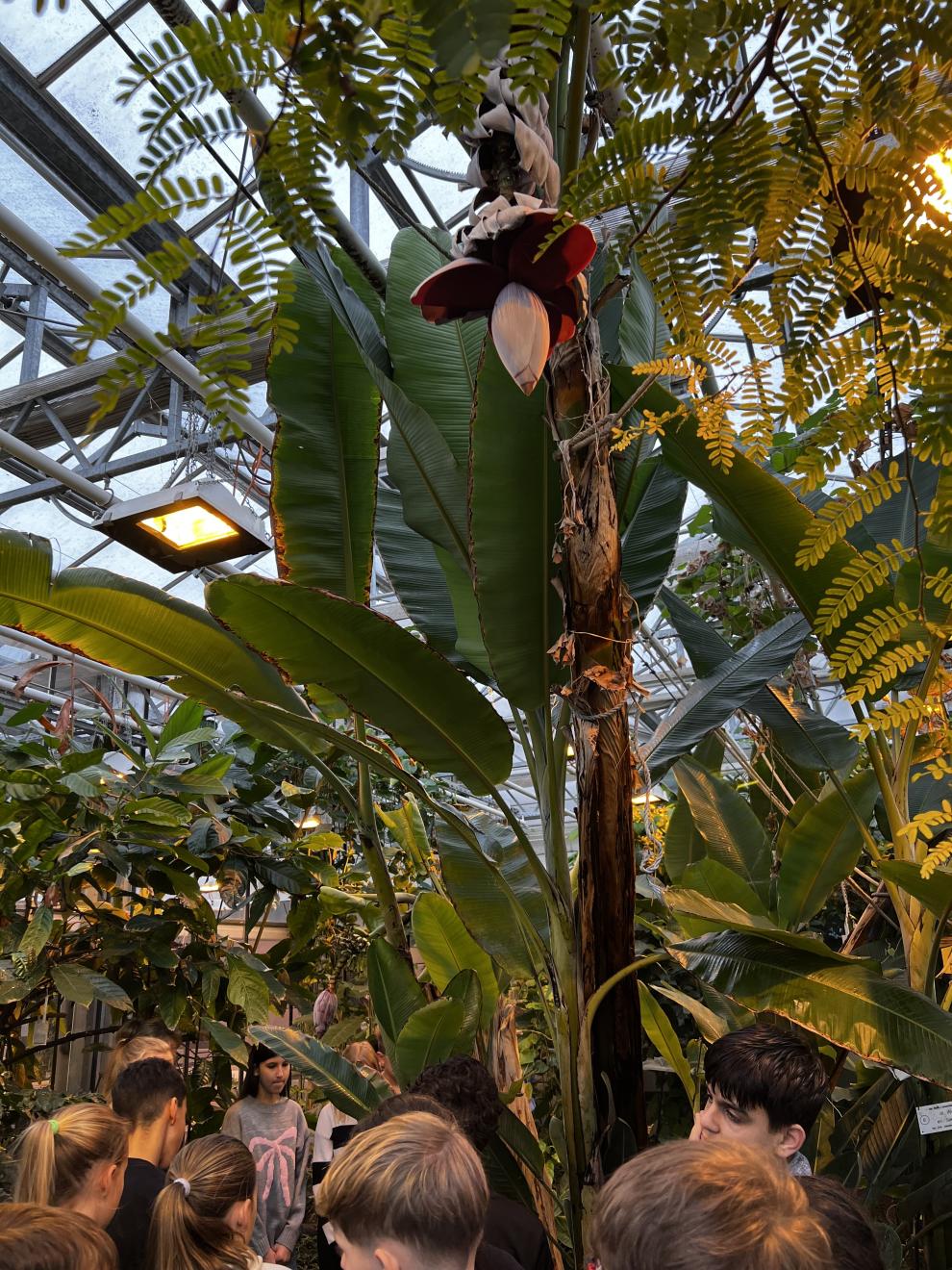Submerged in tropical greenery: pupils at Willibrord-Gymnasium experience the diversity of the rainforest up close
On a rainy February morning, the cold of the Lower Rhine swept through the streets of Kleve, but anyone entering the Tropical House at Rhine-Waal University of Applied Sciences immediately left winter behind. A different climate prevailed here: moist, warm air settled on the skin, while the earthy scent of plants and damp leaves filled the room. Over two days, three seventh-grade classes from Willibrord High School - ninety pupils in total - curiously wandered through the dense greenery, between towering banana trees and lush cocoa trees, to listen to the words of horticulturalist Doris Winkels. Their school trip was an expedition into a living classroom, an encounter with an ecosystem that lies thousands of kilometers away and yet is of crucial importance in the reality of their lives.
The Tropical House, a living research laboratory, is part of the Faculty of Life Sciences and combines science with practical teaching. Prof. Dr. Natalie Laibach, an expert in sustainable land use, guided the young people through the exotic plant world. She showed them banana plants whose leaves almost reached the glass ceiling and let them feel the rough surface of a cocoa pod. “These plants are not just research objects,” she explained, while the irrigation system hummed quietly in the background. “They represent the fragility of our ecosystems and global climatic connections.” The pupils learned that the tropical rainforest is a self-contained world of its own: constant temperatures between 23 and 27 degrees Celsius, humidity that creates a fine haze and rainfall that exceeds that of Central Europe many times over. Instead of clear seasons, there is an interplay of rainy and dry periods.
“I would never have thought that a cocoa bean could smell so earthy,” wondered one pupil as she carefully held an opened fruit in her hands. Such direct sensory experiences are invaluable for Winkels: “We don't just want the pupils to understand the rainforest, we want them to really experience it,” she emphasized after the tour. And so the young people explored the fascinating world of plants in the tropical house - from the pineapple plant on the ground to the vanilla vines that wind their way up between the leaves and defy the cold, wet winter weather here, safely under glass.
The visit concluded with a lecture by Dipl.-Geogr. Björn Flockau, who spoke about the ecological and economic aspects of tropical agricultural systems. The students took a particularly close look at agroforestry as a sustainable alternative to monoculture. While large-scale cocoa plantations can contribute to soil erosion and the loss of biodiversity, mixed cultivation can mitigate the negative consequences: Trees provide shade, their roots strengthen the soil and the microclimate remains stable. A seemingly simple approach with far-reaching ecological benefits.
The young people had another eye-opening experience in the field of bionics. The so-called lotus effect - the water-repellent surface of lotus leaves - is used in technology as a model for self-cleaning materials. They were amazed to discover that this principle can also be found in gardens at home - in nasturtiums and cabbage leaves, for example. Science, they were told, often begins with careful observation.
But this day in the tropical greenhouse was not an isolated experience. Previous year groups from other schools in the Kleve and Wesel districts had already explored the biodiversity of the university garden under the guidance of Prof. Dr. Jens Gebauer. Garden projects and sustainability working groups are regular guests here to not only understand nature in theory, but to experience it with all their senses. In this way, a seemingly ordinary, rainy February morning on the Lower Rhine is repeatedly transformed into the starting point of a journey - into the world of the tropics and hopefully into a deeper understanding of our environment.


